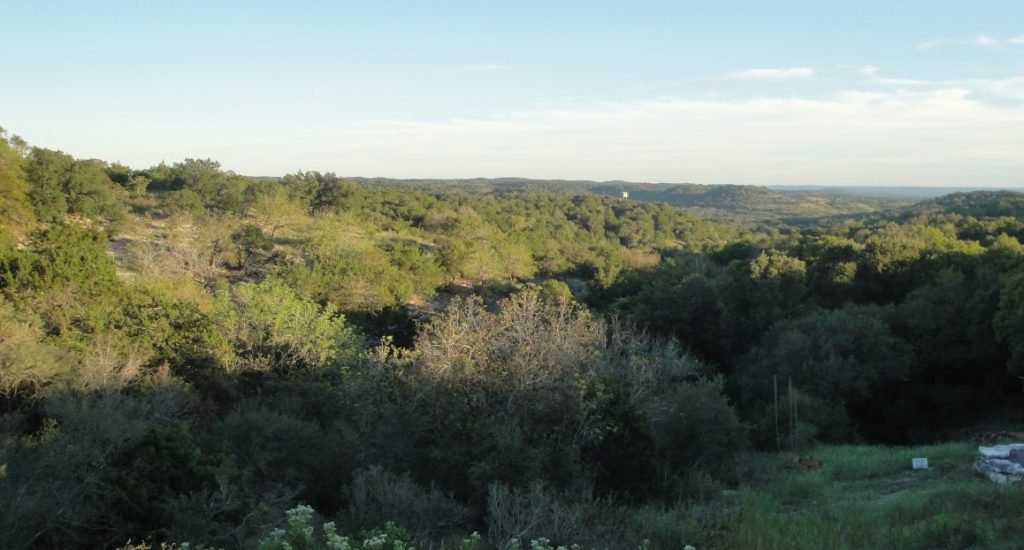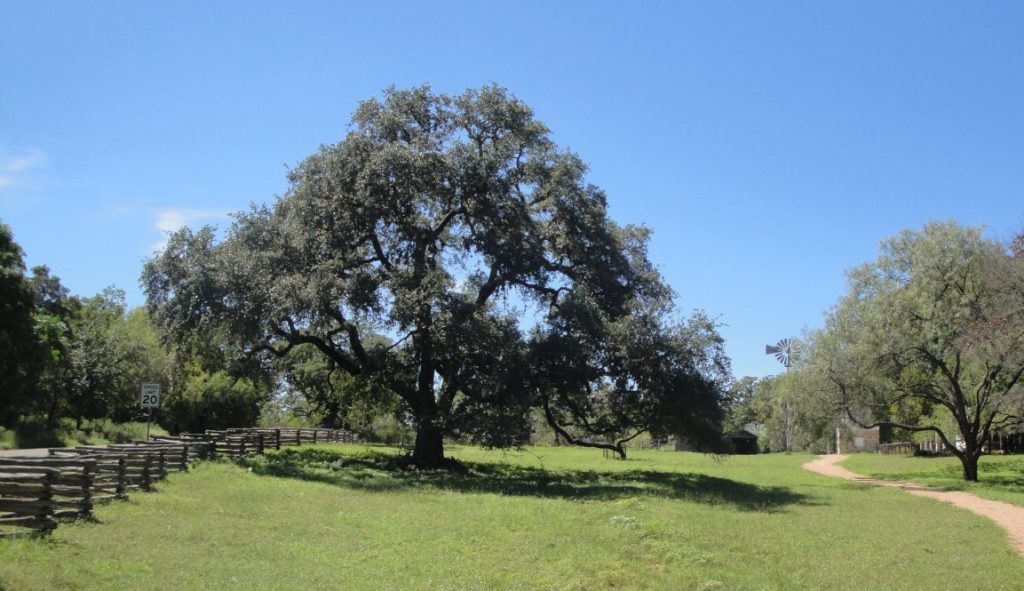
The Texas hill country is extraordinarily pleasant and we got a very green period because of lots of rain in the last couple of weeks. But my joy at encountering this beautiful landscape was tempered by oak wilt that has been killing the wonderful live oaks that give the hills their dominant feel. Oak wilt was identified in Wisconsin in the 1940s and has gradually been spreading. It is s fungal disease spread both by a beetle and through natural root grafts among the oak trees. So if one oak tree get the disease, it usually spreads to the neighbors. I knew about oak wilt before, but seeing it in action here made me profoundly sad. It seems to have had a bigger effect here in the Texas hill country than elsewhere, maybe because the live oaks form pure stands giving the beetles and the root grafts an easy way to go.

You manage oak wilt, but it can be trouble. You have to be sure that the oaks have not sustained injuries that can attract the beetles or give the fungus spores an opening. The danger time for this is in the spring, until about July when summer heat kills exposed spores. This means that spring pruning of oaks is out. You also have to be careful not to smack into the oaks with lawnmowers or other equipment. If you have an infected oak, you have to get rid of it quick AND made sure the roots are not passing the fungus. This means trenching between the infected oak and any others nearby.
When planting trees, it is a good idea not to create pure stands. If oak trees are separated by other sorts of trees, the beetles and spores will spread more slowly or not at all.
The USDA page on oak wilt is here.
As long as I am feeling bad about the ragnarok of beloved big trees, I am also very upset by the emerald ash borer. This rotten little bug is a native of Asia, first identified in Michigan in 2002. Since then it has killed millions of ash trees and spread as south as Virginia, east to the Atlantic Ocean and west to the Great Plains. The insect gets under the bark and quickly kills ash trees.
Emerald ash borers are not very mobile and left on their own they would probably remain a local problem. Unfortunately, they hitch rides with us when we drive and especially when we transport infected firewood. Never move fresh firewood any farther than you can walk.
The other one that bothers me is the hemlock wooly agelgid. This is another Asian import that was first reported in America in 1924. This bug threatens the continued existence of hemlocks in the U.S. outside protected gardens. Treatments are available but many of our nicest hemlock forests are gone already. Hemlocks occupied a particular ecological niche in that they can grow in very deep shade. They used to fill an important role as understory trees and in shading little streams and keeping water temperatures lower. Their ghost forests cannot do this.
On the plus side, we have developed American elms that are resistant to blight. We have better science available all the time. Maybe we can stay ahead of the bugs, but it will be a lot of work.
The top picture is a Texas hill country landscape. You can see the dead trees in the foreground. Below that is what a healthy Texas live oak looks like.
PS – I am informed that my reference to Ragnarok is too obscure and that some people might confuse it with some kind of video game. Ragnarok is from Norse mythology. It is the final struggle where the gods, such as Odin and Thor, are doomed. In German it is (also obscure) Gotterdamerung. A Wagner opera has that title and goes into the subject. The English “Twilight of the Gods” doesn’t really cover it, IMO. I understood when I wrote that it was hyperbole, but it seems that hyperbole is not really out of place if you risk losing species of trees that have dominated our landscapes since the end of the last ice age.
